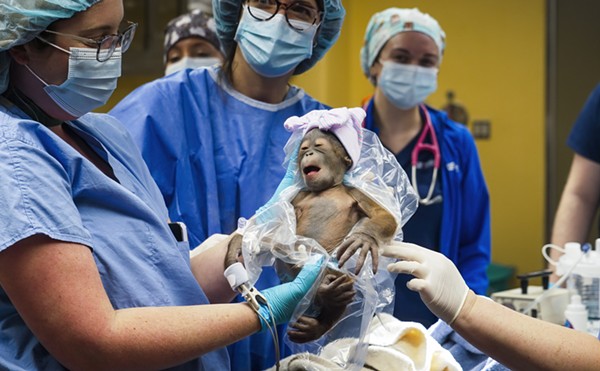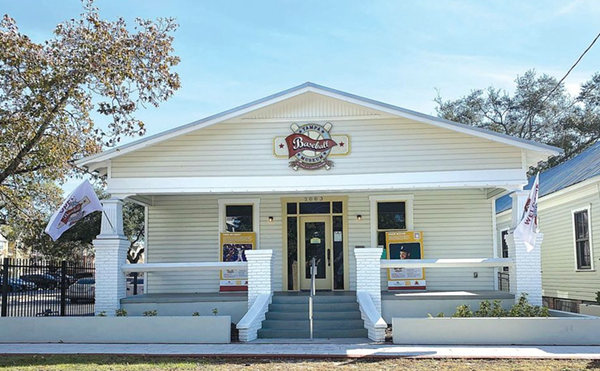When German film director Werner Herzog came to USF Saturday afternoon to speak and screen his new documentary Into the Abyss, he brought backup in case the DVD didn’t work.
However, it was far from the typical backup — it was four new movies he’s since shot.
“Into the Abyss was released theatrically last weekend, but I made four films already, which no one has seen yet,” he said. “If something gets stuck, we’ll put in the next one and there’s three more from there.”
The prolific director’s latest documentary follows Michael Perry and Jason Burkett, two Texas men convicted of a triple homicide. His four new films are all also about death row inmates, including a Florida man named James Barnes, that will be one-hour television movies.
Yet during Herzog’s hour-long Q&A session, the discussion spanned from Into the Abyss to his entire filmography, as well as topics like choosing films and yoga classes.
Asked why so many of his recent movies deal with death, Herzog also pointed to his nature documentaries Encounters at the End of the World and Cave of Forgotten Dreams and said “I just do the films that come at me most ferociously.”
"If you wake up in the middle of the night, I keep saying this as a metaphor, and there are burglars and there’s quite a bunch of them,” Herzog said, “then you come down to the kitchen and all of a sudden, there is one that comes swinging at you with a knife in his hands, then you better deal with that one first. So that is what has always happened.”
In a career that included feuding with actor Klaus Kinski and filming deep in native jungles, Herzog said he thinks Michael Perry was the most dangerous man he’s ever met in his life. Perry, a 28-year-old with a boyish haircut, was executed eight days after Herzog interviewed him for Into the Abyss.
“It sounds almost like a contradiction — when you look at him, he could be like a James Dean, this kind of lost kid,” Herzog said. “Yet according to my instincts, according to my knowledge of human beings, I believe he was the most dangerous of them all.”
Herzog also spoke about his interviewing style, claiming “you have to have the wisdom of a snake” and bringing up the example of a chaplain at the beginning of Into the Abyss, who finally opens up after a question about a squirrel.
“You have to be coiled up and you have to be patient,” Herzog said. “You ask the right question. ‘Tell me,’ I say in a very cheerful voice, ‘tell me about the encounter with the squirrel,’ then the death row chaplain comes apart and unveils.”
When asked about his influences, Herzog said one of his formative moments as a filmmaker came from watching a Dr. Fu Manchu movie as a child and seeing a recycled shot of a villain falling off a cliff.
“I told my friends, ‘Wait, they are cheating us, it was the same guy who was already dead,’ Herzog said. “They said, ‘No, no, that’s not true, this is another guy.’ But I had seen it, and from then on, I looked at movies differently because I had seen such a bad one.”
However, he said he only sees about two movies a year and much of his inspiration comes from reading. Among his film school students’ reading list is a Hemingway short story, an account of the conquest of Mexico and the Warren Commission Report on John Kennedy’s assassination.
Herzog said he believes reading is meditative, while there is only “emptiness” in yoga classes — a repeated target of his during the discussion.
“That’s what I find so abominable about yoga classes,” he said. “When you see multiple housewives in Stevens Point, Wisconsin or multiple housewives in Omaha, Nebraska doing yoga, it just frightens me.”
The last question was on Herzog's legend, and he answered and dismissed the question promptly.
"I’ve led an intense life, probably more intense than you would expect from a filmmaker," he said. "But that’s okay, who cares? The only thing you should care is what you see on screen, and whether I have almost died during the shooting, who cares? ... Who cares if Klaus Kinski was difficult? So what? Who cares whether I was shot during an interview or shot a film over a volcano that was about to explode?”
















